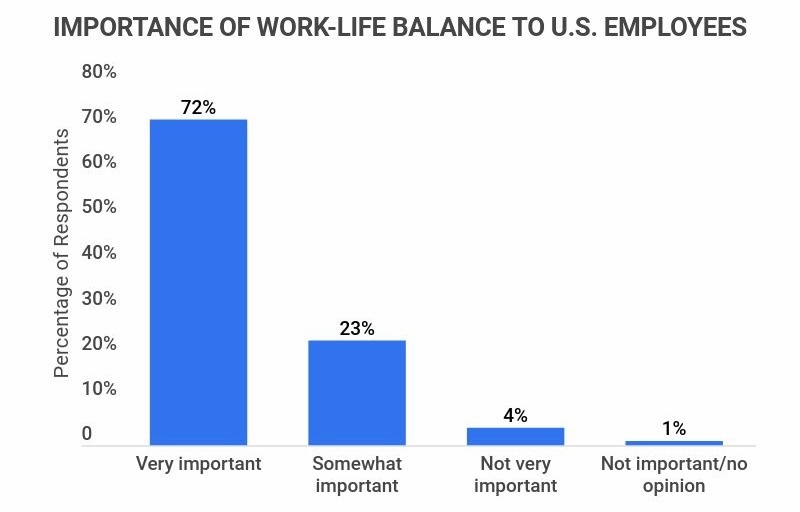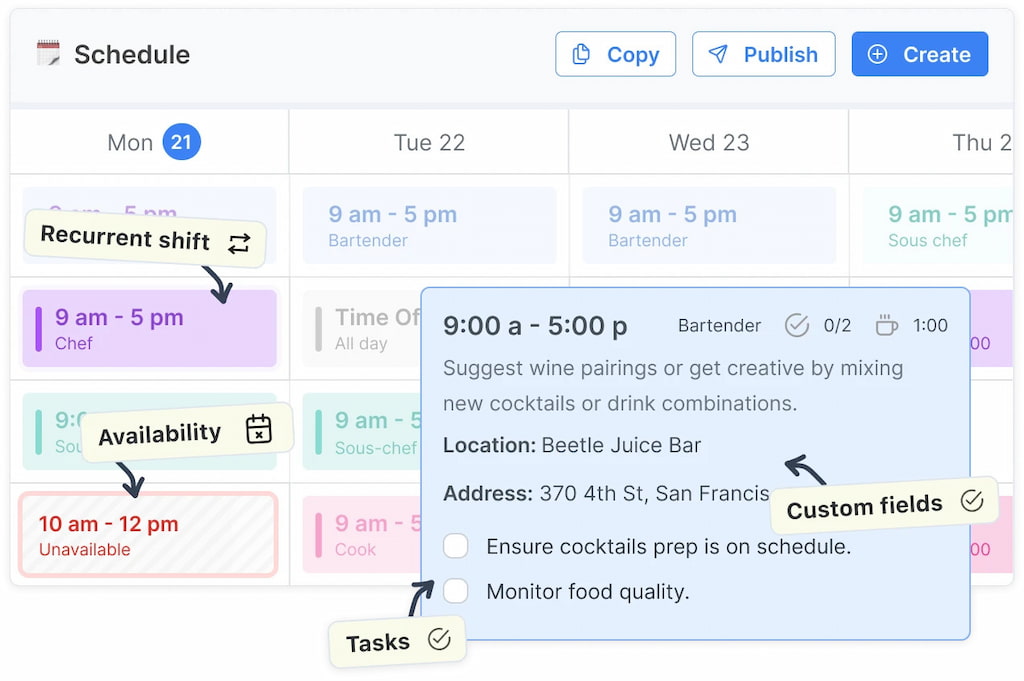The modern job market has moved beyond the typical 9-to-5. One of the most common alternatives is the 2nd shift hours, which usually cover late afternoon to late evening. Managing this type of schedule? Consider using free employee shift scheduling apps to make the process easier. In this article, we’ll break down what is 2nd shift hours, how it works, and why it’s become essential for many businesses today.
🧐 What Are Second Shift Hours?
Second shift hours—also known as swing shifts—typically start between 3:00 PM and 5:00 PM and end around 11:00 PM to 1:00 AM. This schedule sits between the traditional 9–5 day shift and the overnight graveyard shift.
For industries like manufacturing, healthcare, law enforcement, logistics, and hospitality, second shifts keep operations moving beyond the daylight cycle. But they also demand unique adaptations for sleep, social life, and mental wellness.
❗️ Common Work Shift Types (2025 Snapshot)
To understand where second shifts fit in, here’s a look at how workplaces segment time:
| Shift type | Typical hours | Best for |
|---|---|---|
| First shift (day) | 6:00 AM – 2:00 PM | Most office, retail, & public jobs |
| Second shift (swing) | 3:00 PM – Midnight | Manufacturing, healthcare, support |
| Third shift (graveyard) | 11:00 PM – 7:00 AM | Security, logistics, emergency care |
| Split shift | Varies | Restaurants, hospitality |
| Rotating shifts | Varies | Industrial, healthcare, factory |
| Flextime | User-defined | Office, freelance, digital roles |
👀 Why Do Companies Use Second Shifts?
Second shifts aren’t just about extending coverage—they’re about optimizing operations and talent.
- 24/7 production: Keeps workflows continuous across time zones
- Cost efficiency: Maximizes facility and equipment use
- Shift differentials: Lets companies attract talent with higher pay for odd hours
- Hiring flexibility: Appeals to students, caregivers, and night-oriented workers
In short, the second shift is both a strategic tool and a lifestyle enabler—when handled right.
✅ Benefits of Working Second Shift Hours
Working evenings isn’t for everyone—but for the right person, it’s a game-changer. Here’s why:
🌤️ More daylight flexibility: Mornings are yours. Handle errands, appointments, school drop-offs, or personal hobbies—all without sacrificing work hours.

💵 Higher pay (shift differentials): Second-shift roles often come with premium hourly rates or bonuses—especially in unionized or essential service roles.
🛣️ Easier commutes: No rush hour traffic. Second shifters usually enjoy shorter, quieter drives with less stress and lower gas costs.
💚 Less crowded errands: Want the gym to yourself? Grocery store without lines? Second shift gives you off-peak access to just about everything.
🧘♂️ Side hustle or study time: Use mornings for college classes, freelance gigs, or creative pursuits—without double-booking your brain.
👥 Tight-knit teams: Second shift teams often bond deeply. The smaller, more stable crews create a “we’re-in-this-together” vibe.

💡 The Work-Life Balance Catch
Let’s not sugarcoat it: second shift can strain your social life, sleep cycle, and family time. Here’s how to mitigate that:
1️⃣ Create a routine—then guard it
Set a bedtime alarm, limit screen time after shifts, and follow the same wind-down ritual—even on weekends.
2️⃣ Communicate with family & friends
Set expectations: you’re not available at night, but can do coffee, errands, or school pickups during the day.
3️⃣ Eat strategically
Late-night heavy meals disrupt sleep. Fuel up before your shift and opt for light snacks after 10 p.m..
4️⃣ Use blackout curtains + sound machines
Make your bedroom feel like midnight at noon. Light-proofing improves your post-shift recovery dramatically.
5️⃣ Use smart scheduling tools
Keep everyone on the same page with real-time scheduling apps. (More on that below.)
🤔 Choosing the Right Shift for You
Here’s a fast way to tell if the second shift is right for you:
- ✔️ You’re a night owl or feel more energized in the evening.
- You need daytime flexibility for kids, school, or a side gig.
- You prefer fewer crowds and less traffic.
- ⚠️ You struggle with late sleep or miss out on family dinners.
- Your job doesn’t offer extra pay for working this shift.
If most of the first three points sound like you, the second shift could actually improve your work-life balance.
💪 Smarter Scheduling for Second Shifts
Managing second shifts manually—via whiteboards, texts, or spreadsheets—is a recipe for burnout and no-shows. That’s why tools like Shifts by Everhour make a real difference.
Why it works:
- 📆 Drag-and-drop scheduling with live visibility
- 🔁 Easy shift swaps—no awkward texts or delays
- 📱 Mobile access for on-the-go updates
- ✅ Time-off integration and labor compliance tracking

❓FAQ: Second Shift Work
What time does the second shift usually start and end?
Typically from 3:00 PM to 11:00 PM, though this can vary by employer or industry.
Does working the second shift pay more?
Yes. Many employers offer shift differential pay, which can boost hourly rates 5–20%+.
Is second shift bad for your health?
It depends. Poor sleep and erratic eating can cause problems—but with good routines and support, many workers thrive.
How can I stay healthy on the second shift?
Stick to a consistent sleep schedule, avoid heavy meals late, stay hydrated, and make time for movement before your shift.
Can I switch shifts later if I don’t like it?
Often, yes. Many companies allow internal transfer requests after 60–90 days. Check your policy.
🔎 Final Word: Is the 2nd Shift Hours Schedule Right for You?
Second-shift work isn’t just an off-hour compromise—it can be a strategic lifestyle upgrade, especially for those who value flexibility, autonomy, and less crowded routines.
With the right mindset—and the right tool like Shifts by Everhour—you can turn the second shift into a smart, sustainable schedule.
If you’re looking for a seamless way to improve shift planning, Shifts by Everhour is the perfect solution and one of the best When I Work alternatives. With features like real-time monitoring, easy scheduling, and mobile accessibility, managing your workforce has never been simpler. Shifts is also an excellent choice even for complex team structures like those in law enforcement, where having efficient police department scheduling software is essential.
There’s always a possibility for self-service scheduling if your employees decide to do so!

